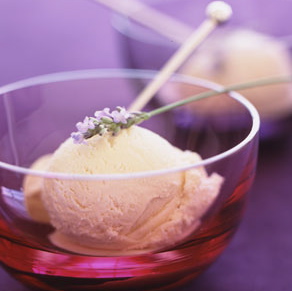 Great news! We can eat flowers! Certain edible kinds, that is! Edible flowers are more abundant than you might think. The flowers growing in your backyard could just very well be the kind you can sprinkle in a salad or decorate a cheese platter with. Flowers added to foods and drinks create instant interest. Guests are always intrigued, surprised and delighted to find these special splashes of color on their plates or plunked in their fizzy drink. Explore with the Herbalista’s the many ways you can bring the outdoor color of flowers on to your table and into your mouth this Holiday Season.
Great news! We can eat flowers! Certain edible kinds, that is! Edible flowers are more abundant than you might think. The flowers growing in your backyard could just very well be the kind you can sprinkle in a salad or decorate a cheese platter with. Flowers added to foods and drinks create instant interest. Guests are always intrigued, surprised and delighted to find these special splashes of color on their plates or plunked in their fizzy drink. Explore with the Herbalista’s the many ways you can bring the outdoor color of flowers on to your table and into your mouth this Holiday Season.
The flavors of the flowers can be mild and subtle and so therefore the ways they may be enjoyed are endless. Get creative and try on salads, cheeses, mixed into butter, and on desserts including ice cream, yum!
Handle with Care: Petals are tender and may wilt if left out too long so use soon after picking. You can also store flowers in an airtight container or wrapped in a moistened produce bag or dishtowel. Picking in the earlier morning will help keep moisture in the petals.
For best taste and to avoid eating the pollen, remove the pistils and stamens.
Common Edible Flowers
Bachelor buttons – in salads, on cheeses
Borage – in salads, on cheeses
Chives- salads, soups, cheeses, butters
Calendula – in salads, cheeses
Day lily- with cream cheese filling
Garlic- in butters, cheeses, dips
Lavenders- add to fruit salads, deserts, ice creams, honey
Nasturtium- adds peppery taste in salads, fill with soft cheeses
Pansy-Viola-Johnny-(Jump-Up’s) high in Vitamins A and C. Add to cheeses and fruit dishes
Rose geranium-on cakes, cream cheese, honeys, butters, in sparkling wines, waters
Rose petals – in champagne, bubbly water, on ice cream, desserts
Sages, pineapple sage- on cheese, savory dishes, potatoes, salads
Sweet Williams (dianthus)- salads, as cake decoration
Words of caution:
Always know exactly what you are picking and eating thereby making sure it is safe for consumption and not poisonous. Grow flowers organically and avoid those grown in conventional nursery’s. Avoid picking flowers along busy roads, or from areas that may have been sprayed with pesticides or other chemicals. Look out for creepy crawlies! And always ask your neighbors before picking from their yard.
